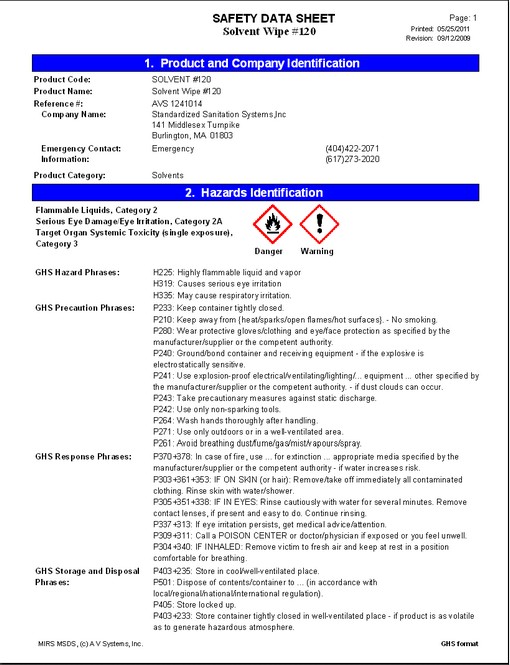GLOBALLY HARMONIZED SYSTEM

GHS is the acronym for the Globally Harmonized System of Classification and Labeling of Chemicals. GHS was actually created from an international mandate adopted at the 1992 “Earth Summit,” the United Nations Conference on Environment and Development (UNCED). The goal of GHS is a worldwide initiative to promote standard criteria for classifying chemicals according to their hazards and communicating hazard information to workers, consumers, transport workers, and emergency responders.
In short, the GHS is a simplified and universal approach to defining and classifying hazards, and then communicating those hazards on easier to understand labels and safety data sheets.
THE RIGHT TO UNDERSTAND
According to the OSHA Fact Sheet of the Hazard Communication Standard Final Rule which came into effect May 25, 2012: “The Hazard Communication Standard in 1983 gave the workers the ‘right to know,’ but the new Globally Harmonized System gives workers the ‘right to understand.’”
THE BIG QUESTION
Now the real question is what does it mean to me?
And the short answer? Not much
With a minimal amount of work, primarily in your Hazard Communication program training, your workplace will become safer thanks to Safety Data Sheets (SDS - formerly known as MSDS) that are uniform, easy to read and actually make sense!
WHEN?
OSHA rules require ALL employers using hazardous materials to train all employees by December 1, 2013, and all new employees hired thereafter.
The full schedule:

It is important to remember that many manufacturers have already converted to the new labels and SDS so learning how to understand them as soon as possible is crucial.
CHANGES IN YOUR TRAINING
The changes you will need to make to the training element of your standard Hazard Communication Program brought about by the GHS, include:
- Standardized content of formatting of Safety Data Sheets (SDS)
- Changes to the hazard categories of hazardous chemicals
- Hazardous chemical label elements
- New pictograms, new and different signal words, hazard statements and precautionary statements.
Make sure to document your training including:
- The dates of the training sessions
- Contents or a summary of the material
- Names and qualifications of person conducting the training
- Names of all persons attending the training sessions.
CHANGES IN YOUR PROGRAM
Terminology: switch from term MSDS to SDS
You will need to adjust our terminology when referring to the informational sheets we have come to know and love as MSDS (Material Safety Data Sheets) to simply SDS (Safety Data Sheets).
Pictograms: include in our HazComm (Hazardous Communication) training pictograms that our employees may see on the SDS.
There are nine basic pictograms. They represent and some specific hazard statements associated with them. Also note that they are broken up into physical, health and environmental hazards.
Signal words: are used in GHS.
There are only two:
· Danger: indicates a more serious potential hazard
· Warning: indicates a less serious potential hazard
Label elements
The GHS does not specify a label format our layout, but requires the inclusion of several elements.
1. Product Identifier.
2. Pictograms.
3. Signal Word.
4. Hazard Statements.
5. Precautionary Statements.
6. Supplier Identification

Safety Data Sheets (SDS)
The information sheets that you get with incoming shipments of hazardous chemicals with information about the chemical, are getting a makeove with 16 standardized sections that must be addressed.
Formerly called Material Safety Data Sheets (MSDS), they are now known as Safety Data Sheets (SDS), and regardless of where they come from will have the following sections.
- Identification
- Hazard(s) identification
- Composition / information on ingredients
- First-aid measures
- Fire-fighting measures
- Accidental release measures
- Handling and storage
- Exposure controls/personal protection
- Physical and chemical properties
- Stability and reactivity
- Toxicological information
- Ecological information
- Disposal considerations
- Transport information
- Regulatory information
- Other information including last revision
SO, IN SHORT, WHAT DO I DO?
Train your people. Any employee that comes in contact with hazardous chemicals must recieve training before December 1, 2013.
Update your program. Make sure that your hazard communication program includes the new GHS requirements and terminology.
Remember that Indoor Environment Group is here to help with all your GHS program needs including training. Contact us today at 651-705-8820 and we’ll be happy to help you get your program up to date quickly.




